In the upcoming weekend I will be playing 【GP Rotterdam】 with my two friends Thomas Enevoldsen and Marijn Lybaert. This is why, today, I will talk a bit about Team Sealed(TS) strategy and what makes this TS somewhat different.
I started playing MTG in 2008, which unfortunately was long after the era of team draft and team sealed. So when Wizards announced that team sealed was gonna be a GP format again, I was excited. The thing about TS is, that it’s very skill intensive and the variance is removed quite a bit.
Having three players looking at the same pool building removes some of the mistakes you can undergo, when building a pool yourself where during the games, you can ask for advice from your teammates and lastly, it is best out of three for the team, so you have to lose two rounds before losing the match – the ladder makes it a bit harder to lose an entire match due to mana screw/flood.
This may sound like TS is a walk in the park – I can tell you, it is not!
When playing sealed your pool has some different ways that it can be built – and sometimes you need to be a bit aggressive, due to not having a late game with high impact cards etc.
In TS you open 12 booster, which leads to higher sealing of bombs, but it also gives you the opportunity to build theme decks within the sets mechanics. So every deck, if built correctly should have a very good theme or late game, which removes a lot of the aggressive decks that only rely on curving out the opponent.
So starting off in the building of the TS deck, you and your teammates, need to be in sync regarding how to evaluate cards – if you are not, it is a good option to point out a person that will make the final call, if a card is in or not – cause you only have 50 min(this is why one or two practice TS is a good thing prior to the event).
We open the 12 packs and now what?
Everyone needs to know what the pool does and which cards are available – so putting the cards into color and sorting out the unplayables is a good start. I will now try and put up what I prefer to do during a TS event:
0. Organize who is the “decider”, which type of decks that the players should play and which archetypes are good in TS, this can differ from regular sealed quite a lot.
1. Sort the cards into colors and lay them out in converted mana cost – Multi colors and artifacts that work in specific strategies goes in their own pile.
2. Figure out what your pool is capable off, if you have a lot of theme cards, good synergies or simply just raw power in a lot of mythics and rares.
3. Build the one deck that the pool almost autobuilds – in this format it is often WR vehicles. This deck is very powerful, and doesn’t really use cards from other strategies.
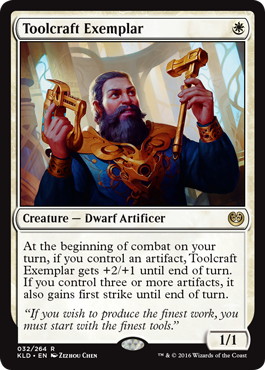 | 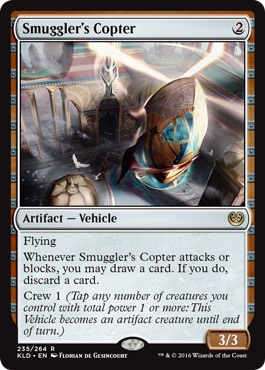 | 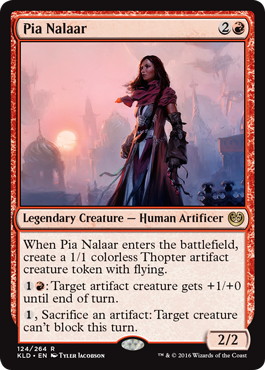 |
4. Now figure out which configuration is the best in your pool of cards.
– Blue is a synergetic color, that has a lot of bad cards, and doesn’t work well on its own, this is not true if you have some of the good blue rares.
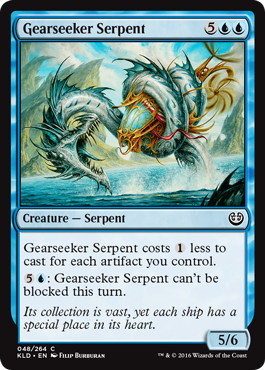 | 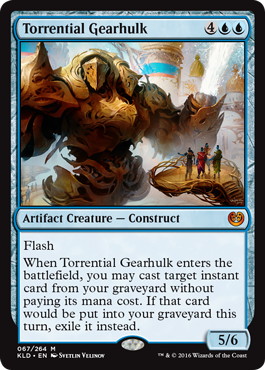 |  |
– Red is very aggressive, but has both removal and stand alone good commons, this makes it a good color to build around.
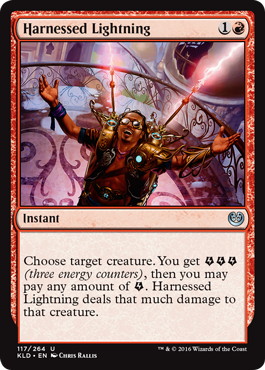 |  | 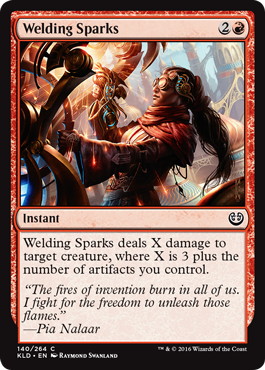 |
– White is very deep, and has a mix of removal, lategame, synergetic and good commons – this makes white a good color to split, cause you want it to support one of the less good colors, to get an overall “deck score” (I will get back to this in a bit).
 | 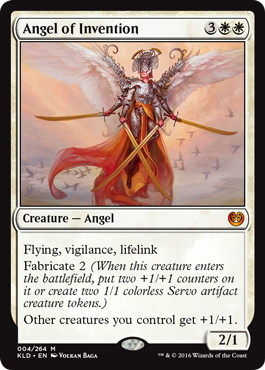 | 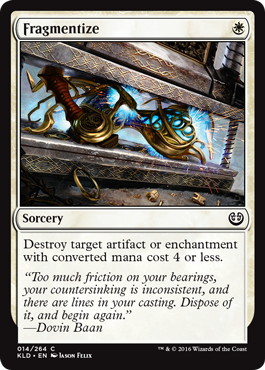 |
– Black is a strong color, but suffers under its ability to not work without artifacts. They have good removal, but the creatures are either very aggressive or late game, and does not commune that well. I see black as either a build around color if there is a mythic or other good rares, but without any spoilers I would use it as a support color.
 |  |  |
– Green is very strong in TS, it has a very strong common pile, good rares, and doesn’t really need any synergi to perform. It is also easy to pair with some of the other colors and get some synergies going.
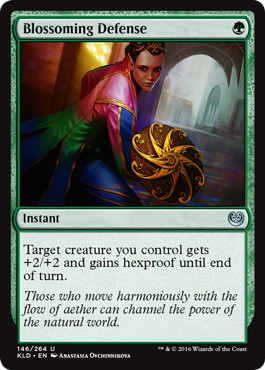 |  | 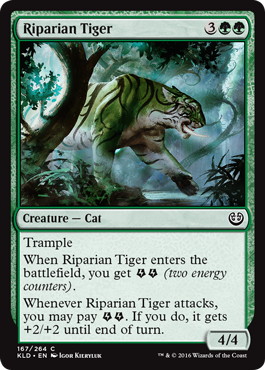 |
– This makes my general assumption that the constellations of color pies in a random TS should be Blue/Green, White/Red and Black+ – this is what I would look for at first, but it is not necessary the decks I will end up with, just a starting point.
5. When you have figured out three decks, rate them on a scale from 1-10 individually – this will eventually give three scores of three decks between 25 and 30.
6. You should now try out three new configurations, and rate these in the same way – continue this if you have time for it – else go with the deck with the overall best score, but also highest low score for example a 5-9-10 is worse than 8-8-7 – I am saying this, because in my opinion it’s better that all decks has a chance, instead of “sacrificing” a deck for the greater good.
7. Figure out which cards are needed for the deck to do its plan, if some of the good cards are redundant in one of the decks, switch things around and make all of the decks as good as they can be.
These are the steps I would go through as a default, it is a bit time consuming, and it should prob be exercised a couple of times before entering the battlefield of the GP.
A couple of things that I have not yet addressed are:
2. Artifacts
3. Play
Building decks and figuring out the puzzle that this is, is very time consuming. This makes all unnecessary discussions about individual cards a thing that you should have discussed beforehand – because you simply don’t have time for everything.
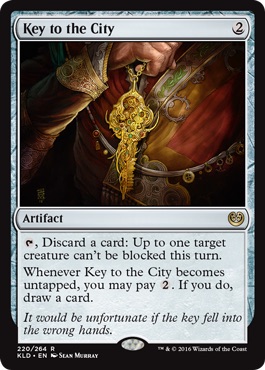 | 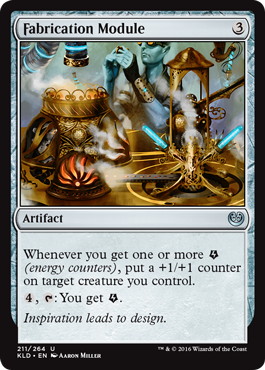 | 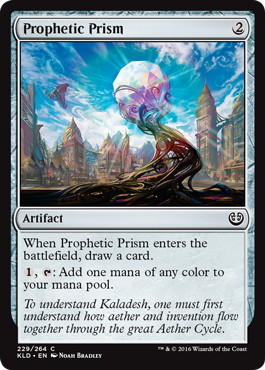 |
The artifacts are both a blessing and a curse. They can fit in any deck – but the power level of the individual card is very dependant on the deck that they enter. Having a strong card like 《Fabrication Module》it will flourish and be one of the absolute strongest cards in the pool – if it is put into the right deck. This goes for almost all the artifacts, they will fit into approx. three different decks, so it will be both difficult and time consuming, to decipher which goes where – making this a topic that has to be discussed from home.
Last but not least – the Play!
Playing a game of magic is complex and the “correct line of play” is a mix of different things, knowledge and situation – so intervening with your partners plays can both be a good thing or a really bad thing. My advice is to let your teammates play their game, and trust in their decisions unless you get to know what they know and what their plan is, if this is obtained, then helping each other can be a force, but intervening, and making new plays that doesn’t fit style or agenda can counteract the overall plan of the game – so be carefull!
Those were the words for now, I hope you enjoyed it, and will be able to apply them to your team in upcoming TS’s – just remember, what I wrote is my way of doing it – it is not necessary that it will work for anyone, but it helps me to do the best deckbuilding/decisions within the given time.
Until next time, win a lot of matches and have fun!
Michael Bonde // LampalotShare in Twitter
Share in Facebook
 Michael Bonde
Michael Bonde
Top 4 at Grand Prix Strassbourg 2013 & Grand Prix Madrid 2015. Followed by a 5th place with the Bonde-Saito-Thiago Team at Grand Prix Sao Paolo 2016. A veteran of the magic pro scene aiming ever higher.
His strengths lie in his ability to reach complicated game states where he is able to grind out a win.

Related Articles
- 2016/11/04
- Martin Muller’s Current Metagame Analysis
- Martin Muller



